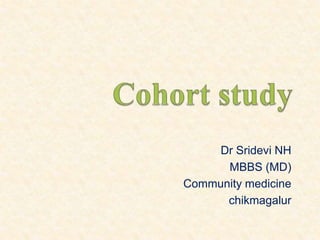This document discusses cohort studies. A cohort study compares outcomes between groups that differ in their exposure to a risk factor. It involves selecting groups of individuals, measuring their exposure to a risk factor, observing them for a defined outcome, and analyzing any association. The key elements are defining the study question, selecting and measuring exposure in study populations, following up to ascertain outcomes, and analyzing results like incidence rates and relative risks. Cohort studies provide strong evidence but require large sample sizes and long follow-up periods.














































